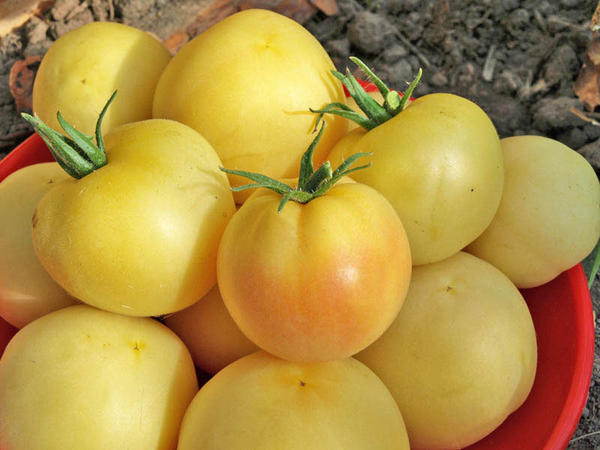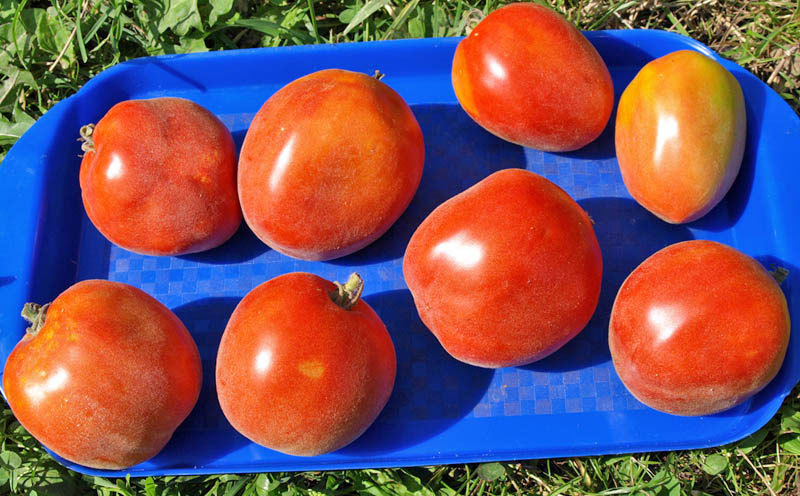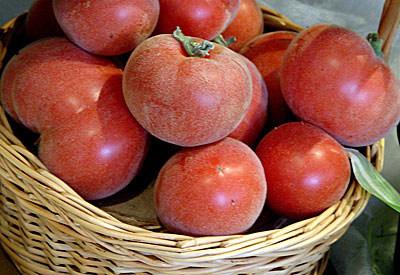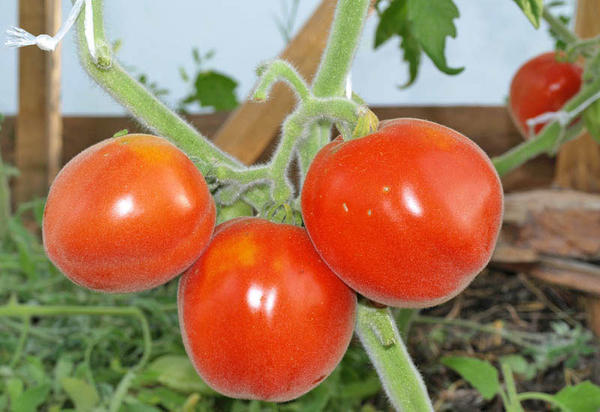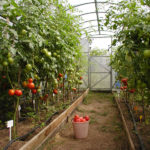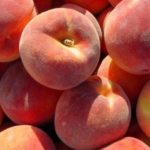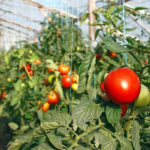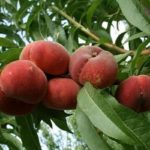Original fruits are the main advantage by which the Peach tomato is recognized. From the name it is clear that the fruits are similar to a peach in shape, color and skin. Summer residents plant this variety of tomato not for harvesting, but for decoration.
Fluffy varieties
Vegetable growers distinguish a whole group of varieties, which includes fluffy tomatoes. Their peculiarity is the fluff on the fruits and leaves.
Peaches tomatoes come in different colors:
- P. velvet - red-burgundy fruits, weighing up to 120 g.Bushes up to 80 cm, powerful standard, semi-spreading, classified as determinant in growth type.
- P. yellow is the white-yellow color of tomatoes. The fruits weigh no more than 80 g, collected in clusters of 6–8 pieces. The bushes are not high (80 cm), standard.
- P. striped - tomatoes are striped, multi-colored (red-pink with yellow stripes). In ripe fruits, the stripes may turn orange. Bushes of different heights, from 50 cm to 1.2 m. The variety is classified as a semi-determinate type. The leaves have a bluish tint and slight pubescence.
- P. white - pale yellow tomatoes, the color of the skin and juicy pulp is delicate, reminiscent of cream.
- P. garden (GardenPeach) - yellow-white fruits.
Separately, we can say about an interesting hybrid with the fruit name Apricot. Of the known “fluffy” tomatoes, this is the largest-fruited. The fluffy fruits of the F1 hybrid can weigh up to 500 g. This weight and size characteristic is rare for fluffy tomatoes.
All tomatoes of this type are tender, juicy, but have a short shelf life. It makes sense to plant a small number of bushes only for fresh consumption of sweet fruits.
Description
Description of the variety: round, without ribbing, fruits with a color depending on the type of tomato, contain sugars up to 10%, which determines their extraordinary sweetness. The percentage of dry matter is minimal. There is no acidity in the taste at all.
The average yield for this category of tomatoes is 17 kg/m², the recommended scheme for planting in exhaust and under cover is 4 bushes per 1 m². Reviews about the taste of the fruit are different. Some people like the skin with a delicate pile, while others absolutely do not.
Disease resistance
Immunity to disease is an important indicator for any summer resident when choosing a variety. All Peaches are characterized by a certain resistance to a number of diseases:
- rot (white, brown, gray);
- powdery mildew;
- mosaic;
- late blight;
- root rot.
Nectarine
Unlike Peach F1 tomatoes with pubescent fruits and leaves, Nectarine is a rare variety with a fruity name and sweet taste. The glossy skin of its fruit is perfectly smooth and shiny, as if it had been smeared with olive oil.
The taste of tomatoes is absolutely sugary, not the slightest sour taste. The fruits have a short shelf life and quickly deteriorate due to the unusually tender and juicy pulp. The growth of the tomato bush is average. The color of the thin skin is similar to the color of the fruit of the same name.
An interesting mid-early tomato hybrid originally from Canada. The description from the manufacturer characterizes it as an indenta that can be grown in the ground and in any type of greenhouse.
Gardeners about the variety
Alla, Novosibirsk:
“I want to share my impression of growing Pink Peach tomatoes. I grew several bushes in a greenhouse. The neighbors gave me seedlings. The bushes are not tall and differ from ordinary tomatoes. The leaves and stems are pubescent, and the skin of the fruit is like velvet, with a slight lint.
The tomatoes are not large and are formed in large clusters. The Persians sang late; they were torn out in October. Maintenance was simple. I didn’t remove the shoots, the bushes began to fall over due to the weight of the fruit, so I tied them up.
I watered it, like other tomatoes, 1 – 2 times a week. I threw straw under the bushes. There were no illnesses. I'm happy with the harvest. I released the seeds, distributed them to neighbors and kept them for myself for the next season. I won’t plant a lot, but I will definitely put 4 bushes in my greenhouse.”
Marina, Moscow region:
“Pink peach has been blacklisted. I won't plant these tomatoes anymore. The largest tomato measured 2*3 cm. The yield was not impressive. The bushes were huge, higher than 2 meters.9 bunches were formed, each containing 15 tomatoes. The fruits are deep pink in color.”
How to care for fluffy tomatoes
Let's figure out how to plant powerful F1 hybrids correctly so that they have enough everything: nutrients, light, moisture. The rows should be placed no closer than 50 cm. Dig holes from each other at intervals of 40 cm.
Pour ½ bucket of aged humus (2 years old) or mature compost into each hole measuring 40*40 cm. At the same time add fertilizers:
- potassium;
- urea;
- ash;
- superphosphate.
Calculate the quantity based on the recommendations always indicated on the pack. Prepare the holes at least a week before transplanting Red Peach tomato seedlings. Pour a liter of water under each bush.
To keep the soil loose and moist, you will need mulch. If you have a garden with fruit trees, prepare fallen leaves for the tomato beds in the fall. Straw and dry grass will do. It is enough to cover the soil with a layer of 5 cm.
Pros of mulch:
- holds water;
- mulch, rotting, feeds the tomatoes;
- Earthworms and other microorganisms that benefit plants grow in the soil.
Bush care
During active growth, tie the bushes to a support. Indents will have to be tied up all summer, since their growth does not stop during the entire growing season.
Stepchildren should be partially removed even from low-growing varieties. Leaves that begin to turn yellow must be removed: it is especially important to do this in greenhouses. Partial removal of leaves can be considered a preventive measure against late blight.
Fertilize
Prepare an infusion of mullein or dry chicken manure. A liter of this tincture is enough for a bucket of water. You can feed the fluffy bushes at the root 2 weeks after transplanting them to the ridge.
The second and third feeding should be carried out after 2 weeks. During the third feeding, add nitroammophoska and superphosphate to the infusion. Fertilize only after watering: this way you can avoid burning the roots.
Watering
If the ridges are covered with mulch, water once a week or less, and if there is no mulch and the weather is hot, dry, water 2 times a week. Watering should not be superficial. Soak the soil well, but do not overwater.
Conclusion
Advice for those who have not yet planted Peach tomatoes. Buy a bag of fluffy tomato seeds: these tomatoes will be a good addition to your garden collection. Caring for them is no more difficult than for ordinary varieties.

